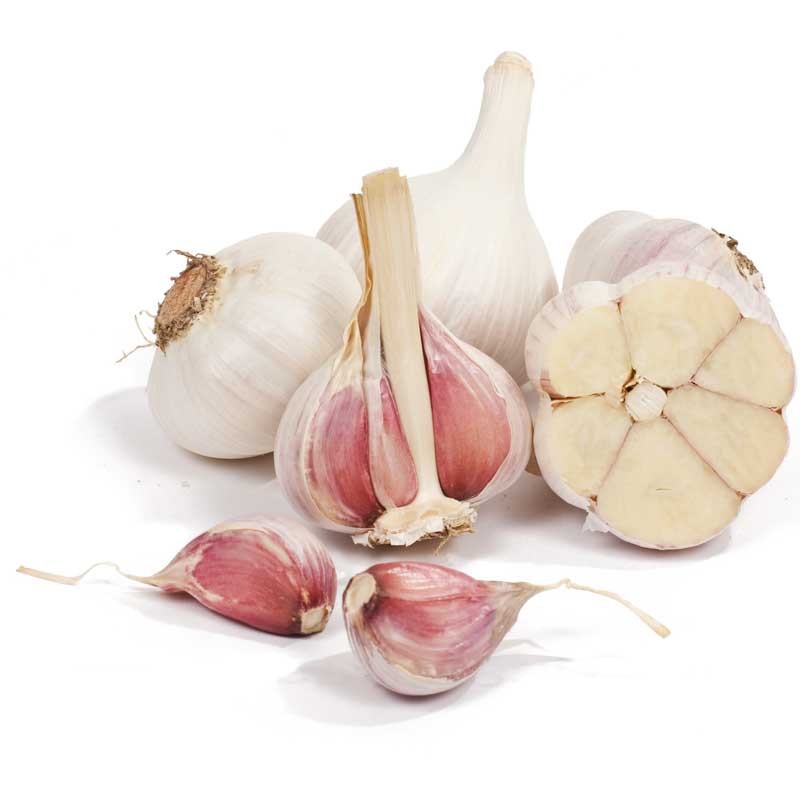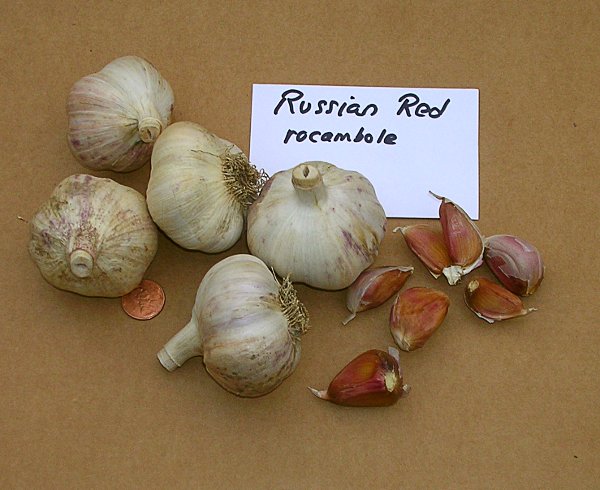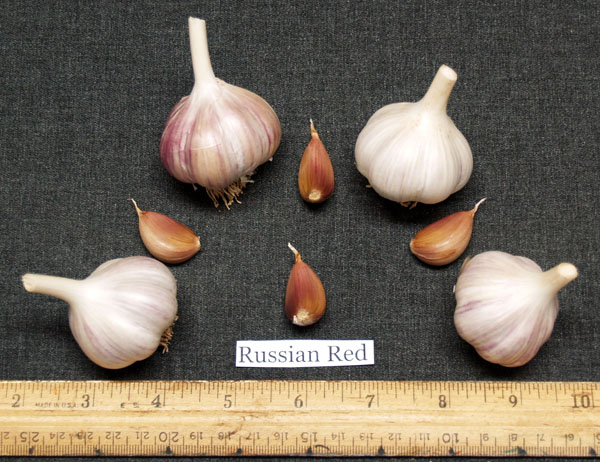Quick Facts:
- Latin name: Allium Sativum Ophioscorodon
- Heirloom variety
- Hardneck
- Rocambole Garlic

History
Do you know who’s responsible for bringing Russian Red garlic to the Pacific Northwest? I’ll give you two hints:
Hint #1 – It’s a big country that you can see from Alaska.
Hint #2- It’s Russia.
Did you figure it out yet? Yup, your gut, and reading skills, have brought you to the right answer once again.
In the early 1900s Russian Doukhobor immigrants, in their (successful) effort to escape the tyranical and oppressive Czarist Government, brought Russian Red along with them to the Pacific Northwest, more specifically, British Columbia. In fact, the Canadian government was very welcoming to the Doukhobors, to the point of granting them land that is now Saskatchewan and Manitoba. Nobody knows if the Russian Red Garlic “sweetened” the deal for the Canadian governmet, but it sure is fun to imagine that they were going to turn Russian emigrants away until they were offered a handful of Russian Red garlic.
No. No, that most certainly did not happen.
Anyways, I think “Red Russian” is an ill-fitting name. Primarily because the people who brought it to North America, were trying to escape Russia, rather than promote it. The least, the namers of this variety could have done, was name it Doukhobor Red. I suppose that doesn’t quite have the alliteration we’ve all come to love in our titles. So how about? Doukhobor Damascena? No? Allright, Russian Red it is.
BUT! At least you know that the Doukhbors brought us this time-tested champion of a garlic variety.
Since the early 1900s, Russian Red has flourished as a commercial variety, especially by Canadian growers because of its success growing in colder winters. And, of course, no garlic could have thrived for so many decades without its dependable delicousness (appreciate the alliteration?) on the dinner table.

Appearance
5-8 cloves per bulb
Less white than other hardneck varieties. Some may exclaim, “give that poor garlic a bath, post haste!” No, it’s not dirty, the wrapper is just a bit browner tinted. That’s all. While it is one of the… uglier garlics in the world, the toothsome taste will make all memories of its appearance fade away. Truly. Don’t turn this garlic away just because it may look like it needs a wash.

To Grow
Zones – 3-8
Depth – 4 in.
Spacing – 6 in.
Light – Full Sun
Plant in the fall, and harvest mid-late summer the following year
Russian Red Garlic likes a colder winter and colder spring. Again, many canadian growers love Russian Red for it’s ability to withstand the wet, soggy, winters.
Don’t grow Russian Red if you experience warm winters. What exactly is a warm winter? Just ask your uncle who plays golf in Fort Lauderdale from November to March every year. As a general rule of thumb, if you’re walking around in flip flops in February, grow a different variety of garlic best suited for warm winters.
Taste
The flavor is the big winner here.
It starts strong and finishes with a warm, sweet aftertaste.
The depth of the flavor is truly remarkable. A heat that won’t send you packing, but forever keep you snacking… that’s bad. But true. From me to you.
Start Growing
If you’re ready start growing these seeds, click the link below to see the different growers offering Russian Red here on SeedWise.
Any Questions?
If you have any questions about Russian Red Garlic, leave them in the comments below, and I’ll do my best to answer them for you!

Sorry, pressed accidentally
I was saying, that I do believe there is some confusion here.
This is the Rocambole garlic “Russian Red”: https://www.seedwise.com/resources/russian-red-garlic-variety/
This is the Marbled Purple Stripe garlic “Red Russian” : https://www.seedwise.com/listing/72/russian-red-marbled-purple-stripe-bulb. Need to reverse the name in the second one’s entry.
Yes, I know, it’s stupid – whoever comes up with these names.
I had to learn the hard way, boughta a grew the wrong one – took two years to figure out why it was doing the wrong thing!
Cheers